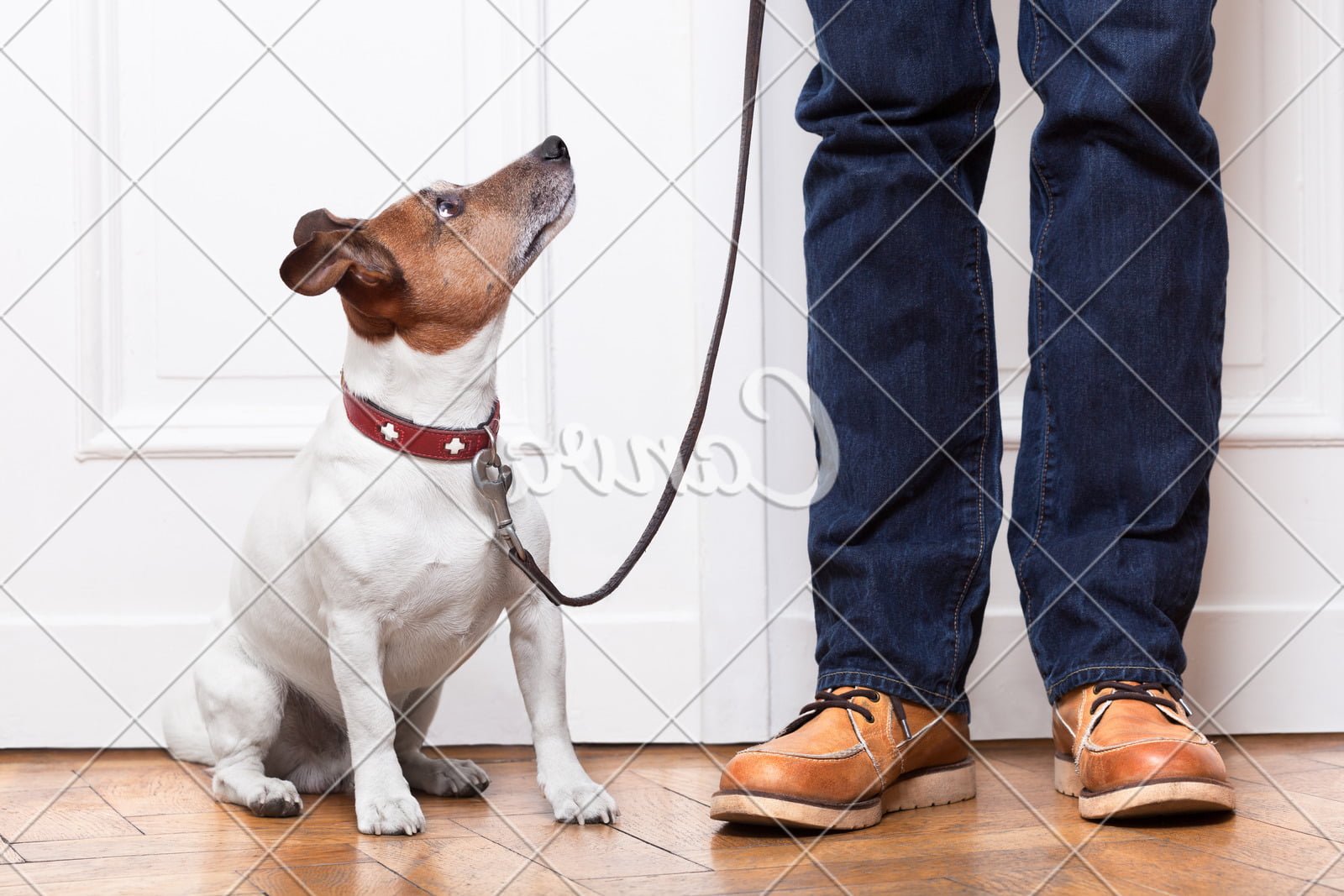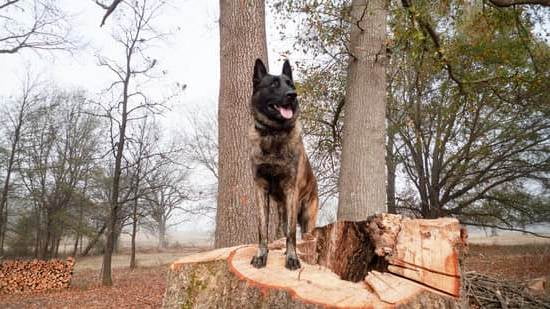Are you constantly dealing with your dog barking at every little noise? If so, you’re not alone. Many dog owners struggle with this behavior, but the good news is that with the right training, it is possible to teach your dog not to bark at noises. In this article, we will explore effective methods for addressing this issue and creating a more peaceful environment for both you and your furry friend.
Dogs bark at noises for a variety of reasons, including instinctual behaviors, fear or anxiety, and even boredom. Understanding the underlying cause of your dog’s barking is the first step in addressing the problem. By gaining insight into why your dog reacts to certain noises, you can implement targeted training methods to help modify their behavior.
Identifying triggers for your dog’s barking is essential in developing a successful training plan. This may involve keeping a log of when and where your dog barks, as well as noting any specific stimuli that seem to set them off. With this information in hand, you can begin to address each trigger individually, using positive reinforcement techniques to encourage more desirable behaviors in response to noises.
Identifying Triggers for Your Dog’s Barking
Understanding Your Dog’s Triggers
Every dog has specific triggers that cause them to bark at noises. It is important to understand your dog’s behavior and identify these triggers in order to effectively train them not to bark. Some common triggers include doorbells, car horns, other animals, or even the sound of footsteps. By closely observing your dog’s behavior, you can pinpoint what exactly sets them off and work on addressing these triggers.
Keeping a Barking Journal
One way to identify your dog’s triggers is by keeping a barking journal. Note down the times and situations when your dog starts barking at noises. This will give you valuable insight into the specific triggers that cause your dog to react. By consistently recording this information, you can start to see patterns and identify the most common triggers. This will then allow you to tailor your training approach specifically to address these triggers.
Consulting With a Professional
If you are having trouble identifying your dog’s triggers or if their barking seems excessive and uncontrollable, it may be beneficial to seek the help of a professional dog trainer or behaviorist. These experts have extensive knowledge and experience in understanding canine behavior and can provide valuable insights into why your dog might be barking at noises. They can also offer personalized training plans and techniques tailored to your specific situation.
By taking the time to understand and identify your dog’s triggers for barking at noises, you can effectively work towards training them not to react in such a manner through positive reinforcement methods and desensitization techniques.
Positive Reinforcement Training Methods
When it comes to training your dog not to bark at noises, positive reinforcement is a powerful tool. This training method involves providing rewards for good behavior, such as staying quiet when a noise occurs. Here are some effective positive reinforcement techniques to help you train your dog:
- Use treats: Whenever your dog remains calm and doesn’t bark in response to a noise, reward them with their favorite treats. This will reinforce the desired behavior and encourage them to stay quiet in the future.
- Verbal praise: Dogs respond well to verbal praise, so be sure to give them plenty of attention and praise when they refrain from barking at noises. Use an enthusiastic tone to show your dog that staying quiet is a positive behavior.
- Clicker training: Clicker training can be an effective way to communicate with your dog and reinforce good behavior. Use a clicker to mark the moment when your dog stays calm during a noisy situation, and follow it up with a treat or praise.
By utilizing positive reinforcement methods, you can effectively train your dog not to bark at noises while strengthening the bond between you and your furry companion.
Remember that consistency is key in using these methods – always reward your dog for remaining quiet during noisy situations, and avoid inadvertently reinforcing barking behavior by giving attention or treats when they bark. With patience and dedication, you will see progress in teaching your dog how to remain calm when confronted with loud or startling sounds.
Lastly, keep in mind that every dog is unique, so it may take time for some dogs to fully grasp the concept of remaining quiet during noisy situations. Be patient with your furry friend as they learn this new behavior. If you are consistent with the positive reinforcement training methods, you will likely see improvements over time.
Creating a Quiet Space for Your Dog
One way to create a quiet space for your dog is by designating a specific area in your home where they can retreat when they feel anxious or threatened by noises. This could be a cozy corner with their bed and some toys, away from windows and doors where most noises may originate. Make this space inviting and comfortable for your dog so that they naturally gravitate towards it when they feel overwhelmed by external stimuli.
In addition to creating a physical quiet space, it’s important to also cultivate a calm and soothing environment within your home. Playing soft music or white noise can help mask sudden noises that may startle your dog. It’s also important to remain calm yourself, as dogs can pick up on their owner’s emotions. Consistency in maintaining a peaceful atmosphere will contribute greatly to your dog feeling secure and less likely to bark at every noise they hear.
Implementing these strategies, coupled with positive reinforcement training methods as outlined in the previous section of this article, can help train your dog not to bark at noises. Remember, patience and consistency are key when it comes to modifying your pet’s behavior.
Desensitizing Your Dog to Noises
One effective way to train your dog not to bark at noises is through desensitization. This involves gradually exposing your dog to the noises that trigger their barking in a controlled and positive manner. Here are some steps you can take to desensitize your dog to noises:
1. Identify the triggers: Start by identifying the specific noises that trigger your dog’s barking. Common triggers include doorbells, car horns, or other loud sounds.
2. Create a desensitization plan: Once you’ve identified the triggers, create a plan to gradually expose your dog to these noises. Start with recordings of the sounds played at a low volume and gradually increase the volume over time.
3. Use positive reinforcement: Whenever your dog remains calm in the presence of these noises, be sure to reward them with treats, praise, or playtime. This will help create a positive association with the triggering sounds.
By following these steps and being consistent in your training approach, you can help desensitize your dog to noises and reduce their tendency to bark in response.
Remember, desensitization takes time and patience, so be sure to progress at your dog’s pace and provide plenty of encouragement along the way. With dedication and consistency, you can help your furry friend overcome their barking behavior and live more peacefully alongside noisy distractions.
Engaging Your Dog in Mental and Physical Activities
One effective way to train your dog not to bark at noises is by engaging them in mental and physical activities. A tired dog is often a well-behaved dog, so ensuring that your dog gets enough exercise and mental stimulation can help minimize their barking.
Physical activities such as daily walks, runs, or playtime in the backyard can help expend their energy and reduce boredom, which can be a common cause of excessive barking. Mental stimulation, such as puzzle toys, obedience training, or interactive games, can also keep your dog’s mind occupied and reduce their need to bark at every little noise.
In addition to physical exercise and mental stimulation, providing your dog with activities that require focus and attention can redirect their behavior away from barking at noises. Teaching your dog tricks or providing them with challenging tasks like finding hidden treats around the house can redirect their focus in a positive way. By engaging your dog in regular physical and mental activities, you can help decrease their overall anxiety levels and reduce their tendency to bark at noises.
Another useful way to engage your dog is by participating in scent work or nose work activities. Dogs have an incredible sense of smell, and engaging them in scent-related exercises not only provides mental stimulation but also encourages them to use their noses in a positive manner rather than reacting to noise triggers with barking.
Whether it’s through official nose work classes or DIY scent games at home, these activities can help distract and redirect your dog’s attention away from barking at noises.
| Activity | Effect |
|---|---|
| Daily walks and runs | Expend energy and reduce boredom |
| Puzzle toys and obedience training | Provoke mental stimulation |
| Nose work activities | Redirect attention away from barking |
Seeking Professional Help From a Dog Trainer or Behaviorist
When to Seek Professional Help
If you have tried various positive reinforcement training methods, creating a quiet space for your dog, and desensitizing your dog to noises without success, it may be time to seek professional help. A dog trainer or behaviorist can provide expert guidance and support in addressing your dog’s barking behavior.
It is important to seek help from a professional if your dog’s barking is excessive, causing distress to you or your neighbors, or if it seems to be rooted in fear or anxiety.
Working With a Dog Trainer or Behaviorist
A qualified dog trainer or behaviorist will conduct a thorough assessment of your dog’s behavior and determine the underlying cause of their barking at noises. They will then work with you to create a tailored training plan that addresses the specific triggers and motivations behind your dog’s barking. This may involve implementing behavior modification techniques, such as counter conditioning and desensitization exercises.
The Benefits of Professional Guidance
Working with a professional provides several benefits, including personalized guidance, expertise in canine behavior, and access to specialized training tools and resources. Additionally, a professional can offer valuable insights and tips on managing your dog’s environment and daily routine to support their training progress.
By seeking professional help, you can gain the knowledge and skills needed to effectively train your dog not to bark at noises while ensuring their well-being and happiness. If you feel overwhelmed or unsure about how to train your dog not to bark at noises, seeking the assistance of a professional can make the training process more manageable and successful.
Consistency and Patience
In conclusion, training your dog not to bark at noises requires a combination of understanding, patience, and consistency. It is important to first understand why dogs bark at noises, as this will help you identify the triggers for your dog’s barking behavior. Once you have identified these triggers, positive reinforcement training methods can be used to encourage the desired behavior of staying quiet in response to noises.
Creating a quiet space for your dog, desensitizing them to noises, and engaging them in mental and physical activities are all additional strategies that can help in the training process. However, it is crucial to remember that seeking professional help from a dog trainer or behaviorist may be necessary if your dog’s barking behavior is particularly challenging.
Above all, consistency and patience are the keys to success in training your dog not to bark at noises. This process takes time and dedication, but with the right approach and persistence, it is possible to modify your dog’s barking behavior effectively. By following these steps and being consistent in your training efforts, you can help your furry friend become more calm and quiet in response to noises around them.
Frequently Asked Questions
How Do I Get My Dog to Stop Barking at All Noises?
To get your dog to stop barking at all noises, it’s important to identify the triggers that cause the barking. Once you know what sets off your dog, you can work on desensitizing them to those specific sounds through positive reinforcement training.
Why Does My Dog Bark at Every Noise He Hears?
Dogs bark at every noise they hear for various reasons, including territorial behavior, fear, or simply excitement. It’s essential to understand why your dog is barking in response to noises, as this will help determine the most effective approach for addressing the behavior.
How Do I Desensitize My Dog to Sound?
Desensitizing your dog to sound involves exposing them to gradually increasing levels of the triggering noise while simultaneously providing positive reinforcement. This process helps your dog learn to remain calm and relaxed in the presence of sounds that typically cause them distress or excitement. Consistency and patience are key when desensitizing a dog to sound.

Welcome to the blog! I am a professional dog trainer and have been working with dogs for many years. In this blog, I will be discussing various topics related to dog training, including tips, tricks, and advice. I hope you find this information helpful and informative. Thanks for reading!





